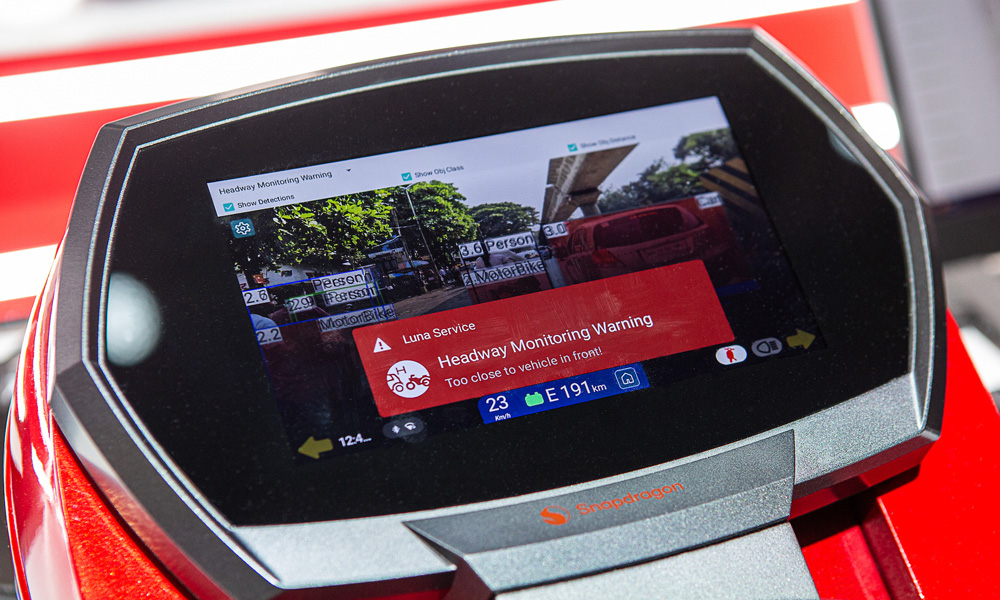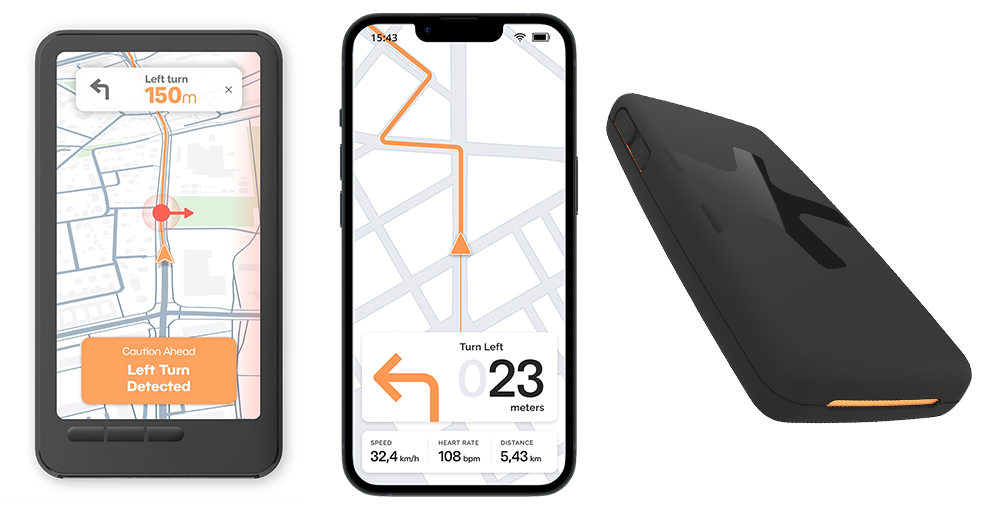
The introduction of advanced connectivity and positioning technologies, and artificial intelligence (AI) continues to redefine the in-vehicle experience, making it easier for consumers to take their digital lives on the go. Aware of their occupants and surroundings, today’s vehicles can offer contextually relevant experiences and services that make travel more personalised and convenient.
Riders of two and three-wheelers will be the next wave of road users to benefit from technology, with solutions geared specifically for these unique mobility devices. The number of two and three-wheeled devices offering connected features and services is expected to grow from 2.5 million in 2023 to 5.9 million in 2030, a compound annual growth rate of 13.6%.1
Technology is also helping to make modern vehicles safer. According to the World Health Organisation’s global status report on road safety 2023, traffic fatalities have fallen by 5% to 1.19 million annually since 2010.3 However there’s still a tremendous opportunity to make travel safer for those riding pedaled or powered bikes, motorcycles, scooters, and other micro-mobility devices. These riders comprised 30% of road fatalities around the globe in 20213 – with deaths among pedal cyclists alone rising 20% to 71,00003.
Technology solutions for riders
Adapting connected services for these unique mobility devices will be essential to rider adoption. For example, because they can operate on roads that may be inaccessible to passenger vehicles, two and three-wheeled devices will need purposefully curated maps to inform navigation. Or because they are subject to greater extremes in movement, they’ll need specialised event detection to provide collision warnings or engage eCall for emergency assistance. Having a cloud-based system for analysing data from these devices will help fleet managers and others in the ecosystem to build and deliver meaningful new services.
"There are currently more than 200 million motorcycles and powered scooters worldwide, with 65 million being added every year1.
Bikes and other micromobility devices number more than 328 million globally, growing at rate of 52 percent a year2."
These two and three-wheeler devices can also share traffic information across 5G networks, and directly using cellular-vehicle-to-everything (C-V2X) technology, to inform safety applications that can help protect VRUs4. Aggregating this granular traffic data in the cloud could also help to make entire transportation systems smarter and more efficient. Having insight into rider behavior could help road operators to improve traffic flow and optimise planning for more complex, multimodal environments.
Highly personalised experiences
Connected two and three-wheelers with integrated intelligence are poised to transform the riding experience. Combining information shared by the rider with sensor data allows these devices to offer contextually relevant features and services such as monitoring battery status and recommending nearby charging stations, providing maintenance reminders, offering real-time navigation with points of interest tailored to the rider, and more.
“As an industry leader in two-wheel innovation and connectivity, Gogoro is proud to be the first OEM to utilise the Snapdragon Digital Chassis™ solutions for two-wheelers in the new Gogoro Pulse Smartscooter,” said Horace Luke, founder and CEO of Gogoro Inc. “The Pulse introduces Gogoro’s new Smart Cockpit with iQ TouchHD which enables a variety of new features that are powered by the new Snapdragon Digital Chassis. Qualcomm Technologies, Inc. and Gogoro share a similar vision for how innovation can accelerate the global shift to sustainable two-wheel transportation.”

Intelligent rider assistance
Diverse in size, driving dynamics and intended purpose, two and three-wheeled devices require technology solutions that are specifically designed to meet rider needs. As they become more software-defined like their four-wheel counterparts, having an advanced rider assistance system (ARAS) that can be scaled to address a wide variety of use cases will be instrumental for enhancing safety and promoting safe behaviors among the growing number of riders worldwide.
“Luna is reimagining the approach to two-wheeler safety with our AI-powered system for rider assistance. This goes beyond conventional in-ride alerts, educating e-riders about how changing their behavior can help make their experience safer,” said Andrew Fleury, CEO of Luna Systems. “Integrated into Snapdragon Digital Chassis solutions, our ARAS includes post-ride analytics to provide rider safety scoring and coaching, empowering OEMs to help users be more aware of and improve their safety skills over time.”
Cyclist safety
C-V2X technology allows vehicles to communicate directly with each other (V2V), roadside infrastructure (V2I) and vulnerable road users including pedestrians and cyclists (V2P) to inform applications such as collision detection and intersection movement assist that can have an immediate impact on safety4. To help protect more cyclists, C-V2X can be integrated into new bikes or added as an aftermarket safety device. Qualcomm Technologies is working with Spoke to do both, including development of a low-cost C-V2X onboard unit (OBU) that can be easily installed by cyclists to increase their visibility among other road users and help avoid collisions.
“Collaborating with Qualcomm Technologies has allowed us to expand the safety benefits of C-V2X to cyclists, so more VRUs are seen by vehicles and have a greater awareness of what’s happening in their immediate surroundings,” said Jarrett Wendt, CEO of Spoke. “Whether pedaled or electric, bikes equipped with C-V2X can exchange traffic information directly with vehicles and infrastructure 10 times per second to support real-time safety alerts. This traffic data can be extended to more road users using cellular networks and aggregated in the cloud to provide the ecosystem with a robust portfolio of insights for developing rider services.”

Modern fleets and transportation services
When brought to the cloud, traffic and safety information can be analysed to help fleet providers and traffic planners further optimise two and three-wheeled vehicles and their journeys. Fleet providers could monitor and track connected vehicles so they can be distributed based on rider usage and continually refreshed with over-the-air updates and new features and services available on-demand. Transportation management and operations centers can use the data generated from connected sensors to manage traffic flow and improve future transportation system design and urban planning.
"With two and three-wheeled mobility devices becoming more prevalent on our roads, having granular information about how these traffic participants behave will be essential for preventing crashes, injuries and deaths involving these vulnerable travelers" said Blaine Leonard, the Transportation Technology Engineer at the Utah Department of Transportation. "Leveraging real-time information through C-V2X and other technologies and alerting motorists and riders about potential conflicts will help to improve safety and create public spaces that increase the efficiency and attractiveness of multimodal transportation."
Conclusion
Qualcomm Technologies is excited to collaborate with transportation stakeholders to usher in a new era of safety and convenience for the growing number of two and three-wheeled mobility riders around the globe.
Learn more about our solutions for two-wheelers and other new vehicle classes, C-V2X and other connectivity technologies.
1. Two-wheel vehicles market data overview, ABI Research February 2024
2. Micromobility Vehicles: 328 million devices to support demand for urban mobility in 2032, Transforma Insights June 2023
3. https://iris.who.int/bitstream/handle/10665/375016/9789240086517-eng.pdf?sequence=1
4. Frequency of target crashes for IntelliDrive safety systems (bts.gov)
Content produced in association with Qualcomm.





